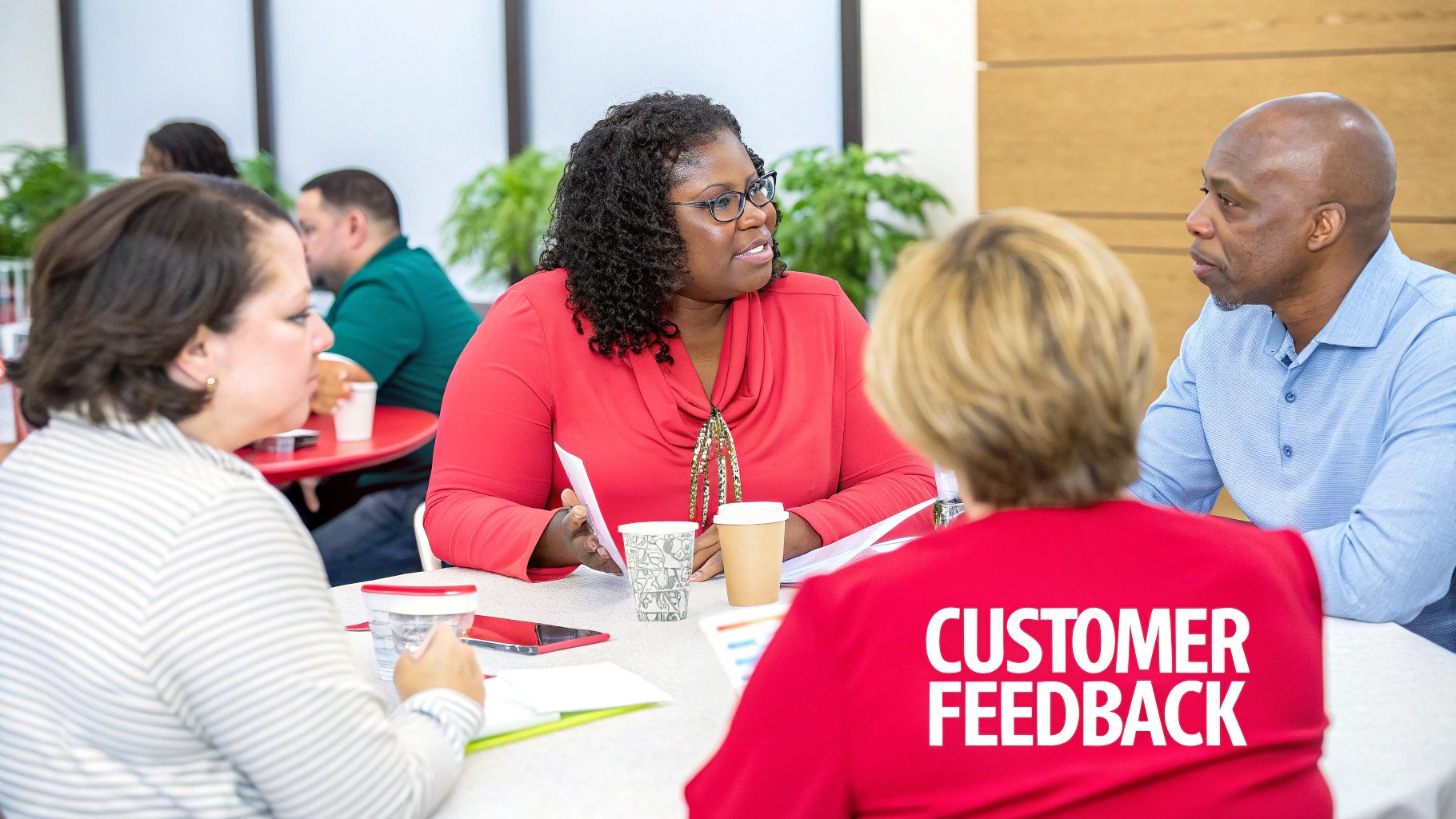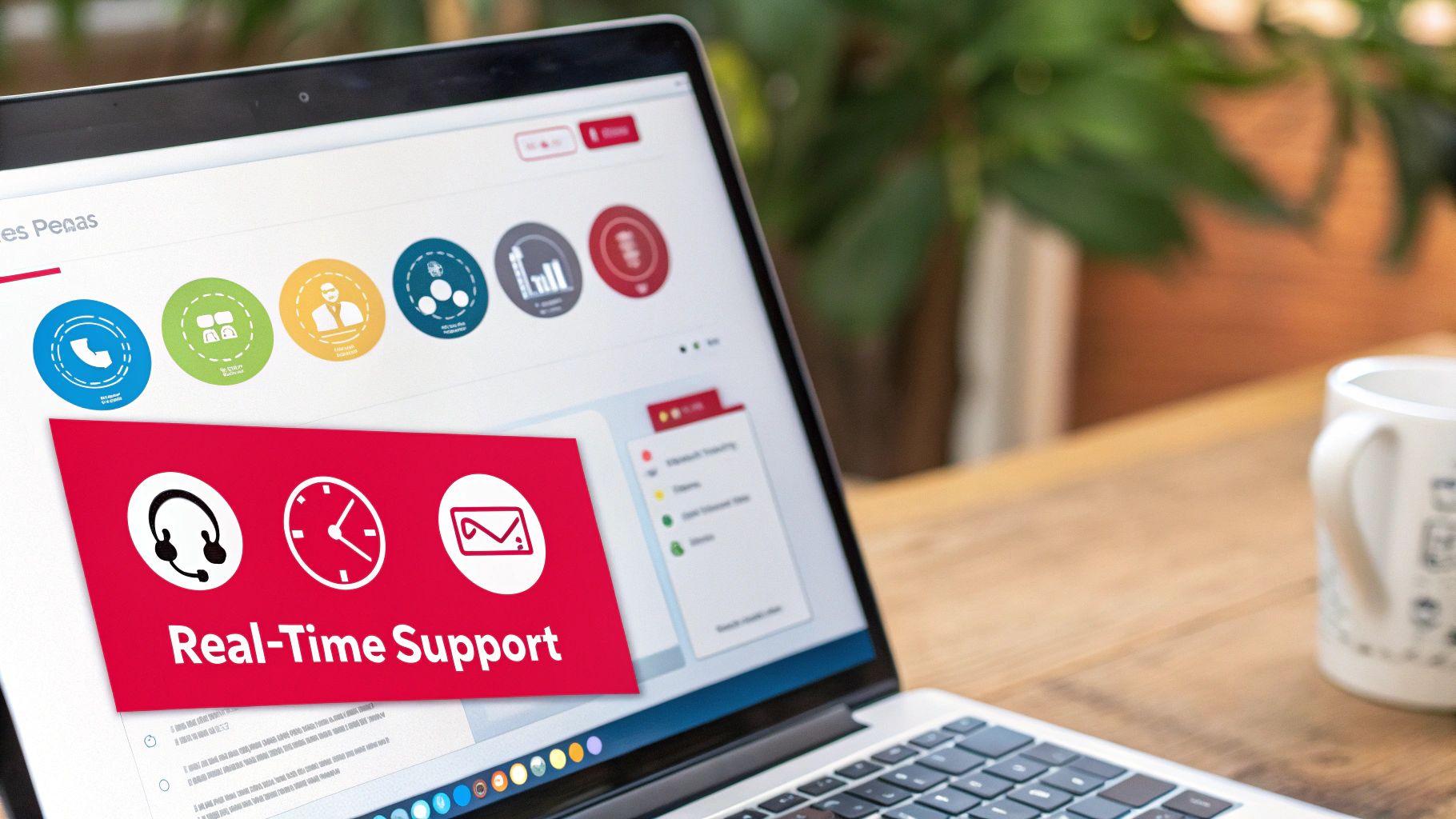Understanding The True Impact of Customer Engagement

Effective customer engagement directly impacts business success in measurable ways. When companies connect meaningfully with customers, they build lasting relationships that boost loyalty and sales. Smart businesses know this - they carefully track how well they engage customers and keep improving their approach. Let's look at exactly how customer engagement affects key business metrics and why it deserves attention.
Why Customer Engagement Matters
When customers feel truly engaged, they become more than buyers - they turn into brand advocates who share their positive experiences. The numbers tell a clear story: engaged customers spend 23% more over their lifetime compared to average customers and spend 60% more per transaction. They're also more likely to buy additional products, leading to 22% higher cross-sell revenue and 38% higher up-sell revenue. Companies that engage customers across multiple channels see their yearly revenue grow by 9.5% on average, while those that don't manage only 3.4% growth. For more details, check out these customer engagement statistics. But the benefits go beyond just better sales numbers.
Measuring the Impact of Engagement
While higher revenue is important, customer engagement affects several other key areas:
- Customer Lifetime Value (CLTV): Engaged customers stay with you longer and spend more over time
- Customer Retention: When customers feel connected to your brand, they're less likely to switch to competitors
- Brand Image: Happy customers share their experiences, building trust through reviews and recommendations
- Customer Understanding: Regular engagement helps you learn what your customers really want and need
These benefits show why a thoughtful engagement strategy matters so much.
Moving Beyond Traditional Metrics
Basic metrics like website visits and social media followers only show part of the picture. To really understand engagement, look at:
- Customer Satisfaction (CSAT) scores: How happy are customers with their experiences?
- Net Promoter Score (NPS): Would customers recommend your business to others?
- Customer Effort Score (CES): How easy is it for customers to get what they need?
By looking at these numbers alongside financial data, you get a complete view of how well your engagement efforts work. This helps you make smart changes that lead to steady growth and stronger customer relationships. Next, we'll explore specific strategies to engage customers effectively and how to put them into action.
Mastering The Art of Personalized Customer Experiences

Meaningful personalization goes far beyond using a customer's name. It's about understanding individual preferences and behaviors to create experiences that genuinely connect. Take a clothing retailer that remembers not just your size, but suggests specific styles based on what you've bought and browsed before. This attention to detail makes customers feel truly understood and valued.
Balancing Automation and Authenticity
Smart automation helps deliver personalized experiences at scale, but maintaining genuine human connections is key. The best approach is using automation for routine tasks like segmented emails and product suggestions, while keeping real people involved for complex support and relationship building. Your brand voice should stay consistent whether customers interact with automated systems or staff members.
Alohaa helps businesses strike this balance perfectly. The platform lets you automate communications while still personalizing messages and bringing in human support when needed. By handling voice, SMS, and WhatsApp interactions seamlessly, it ensures your brand experience stays consistent across every channel.
Ethical Data Collection and Usage
While data powers personalization, collecting and using it responsibly builds trust. Be upfront with customers about what information you gather and how you'll use it. Strong data security and privacy compliance aren't just legal requirements - they show customers you take their privacy seriously and help them feel confident sharing information with you.
Implementing Personalization at Scale
Creating personalized experiences for a growing customer base requires the right tools and strategy. A robust customer relationship management (CRM) system helps segment customers meaningfully. Automated messaging tools ensure consistent, relevant communications across channels while maintaining that personal touch customers value.
The impact of personalization is clear: personalized emails see 29% open rates and 41% click-through rates - far above generic messages. What's more, 76% of consumers actively prefer brands that personalize their communications and offers. These numbers show how personalization drives both engagement and stronger customer relationships.
Measuring the Impact of Personalization
Track key metrics like conversion rates, customer lifetime value, and satisfaction scores to understand how personalization efforts perform. This data helps refine your approach and proves the business value of personalization investments. Regular measurement and adjustment ensures your personalization strategy keeps delivering real results.
Building Excellence in B2B Customer Engagement
Creating strong B2B customer relationships requires much more than basic account management. It's about building meaningful connections through every interaction, similar to constructing a bridge that grows stronger over time. When done right, these relationships can withstand challenges and drive growth for both parties.
Engaging Multiple Stakeholders
Most B2B purchases involve several key decision-makers, each with distinct priorities and concerns. For instance, while a CFO may focus primarily on cost reduction, a CTO typically prioritizes technical capabilities and integration. To succeed, companies need to understand and address the specific needs of each stakeholder through targeted communication and solutions that build consensus across the organization.
Managing Complex Buying Cycles
The B2B sales process often spans months and involves multiple stages that require careful nurturing. Success comes from proactively addressing questions, sharing relevant content, and building trust at each step. Think of it as being a knowledgeable guide, helping clients navigate complex decisions with confidence and clarity.
Creating Value-Driven Engagement Programs
B2B customers need clear, measurable results. The most effective engagement programs deliver tangible value through specialized training, custom solutions, and valuable networking opportunities. This focus on real business impact helps transform standard vendor relationships into true partnerships. The data supports this approach - companies that excel at customer engagement see 63% lower customer attrition, a 55% higher share of wallet, and 50% higher productivity.
Building Long-Term Partnerships
The foundation of successful B2B engagement is developing lasting partnerships built on open communication, deep understanding of client needs, and consistent value delivery. When both parties focus on mutual growth and shared success, they create resilient relationships that drive sustainable results. This transforms standard client interactions into true collaborative partnerships that benefit everyone involved.
Creating A Seamless Omnichannel Experience
The most impactful customer engagement goes beyond single channels to create smooth, connected experiences across every customer touchpoint. Just like how different musicians work together to create beautiful music, successful businesses coordinate their various channels into one cohesive customer journey.
Selecting The Right Channels
Finding the right mix of channels starts with understanding your audience's preferences and habits. Different groups gravitate to different platforms - younger audiences might spend hours on TikTok and Instagram, while business professionals often prefer LinkedIn and industry forums. The key is meeting your customers where they already are.
Developing Consistent Messaging
Your brand voice should shine through consistently, even as content adapts to each platform's unique style. Think of it like musicians playing different parts of the same song - while the specific notes vary, they all contribute to a unified piece. This means keeping core messages aligned while tailoring the delivery format for each channel.
Orchestrating Meaningful Interactions
Good omnichannel engagement creates natural, flowing conversations across platforms. For example, when someone browses products on your website, you might follow up with a personalized email showing related items, then send a text message with a special in-store discount. Each interaction builds on the last to create a complete experience.
Measuring Cross-Channel Performance
Success requires careful tracking of key metrics across all channels - from website traffic and social engagement to email response rates and sales conversions. By analyzing this data, you can spot what's working well and what needs adjustment. Alohaa helps businesses manage and measure their Voice, SMS, and WhatsApp communications in one place, making it easier to understand customer behavior and improve results. Learn more about simplifying your communications at Alohaa.ai.
Breaking Down Internal Barriers
Creating smooth omnichannel experiences often means improving how different teams work together. When departments share goals, data, and insights openly, they can deliver more consistent service at every customer touchpoint. This collaboration helps build stronger relationships - from the first interaction through ongoing support. The result is loyal customers who feel truly understood and valued.
Using Technology to Build Strong Customer Connections

The right technology can help businesses create better connections with customers. When used thoughtfully, tech tools enable more personal interactions and efficient communication at scale. But it's essential to maintain genuine human relationships rather than relying solely on automation. Let's explore how to blend technology and personal touch effectively.
Smart Automation and AI Support
Artificial intelligence helps businesses handle customer interactions more effectively. For example, AI chatbots can quickly answer common questions, which gives human support teams more time to focus on complex customer needs. Email automation makes it possible to send relevant, personalized messages based on each customer's actions and preferences. This works especially well for sending timely updates like shipping notifications or appointment confirmations.
Using Data to Understand Customers Better
Customer data tells an important story about what works and what doesn't. By looking at website traffic patterns and social media engagement, businesses can see which content their audience finds most valuable. This helps companies focus their efforts on the most effective channels and approaches. With these insights, teams can make better decisions about where to invest their time and resources to build stronger customer relationships.
Picking the Right Tools
Success depends on choosing technology that fits your specific business needs and goals. Alohaa offers one solution that brings together voice, SMS, and WhatsApp communications in a single platform. This makes it easier to maintain consistent service across different channels. For businesses looking to improve how they connect with customers across multiple channels, Alohaa.ai provides helpful tools to strengthen customer engagement.
Keeping Conversations Personal
While automation helps with many tasks, person-to-person connection remains vital. Customers value real conversations and individualized support, especially for complex issues that need empathy and creative problem-solving. The key is finding the right mix - using technology to create more opportunities for meaningful human interaction, not fewer. When automation handles routine tasks, staff can focus on building genuine relationships through quality conversations with customers.
Measuring What Matters in Customer Engagement

When it comes to customer engagement, surface-level numbers only tell part of the story. While metrics like website traffic and social media followers might look impressive, they're what we call vanity metrics - they don't necessarily show how customers genuinely connect with your brand. Let's explore the metrics that actually predict business growth and customer loyalty.
Identifying Key Performance Indicators (KPIs)
Smart measurement begins with choosing the right Key Performance Indicators (KPIs). Take website traffic, for example - while it gives you a general sense of reach, conversion rates tell you how many visitors take meaningful actions like making purchases. This helps you focus on engagement that drives real business results.
Here are some KPIs that give you the full picture:
- Customer Satisfaction (CSAT) Scores: These direct feedback metrics show how happy customers are with specific interactions. When CSAT scores rise, you're likely to see more repeat business.
- Net Promoter Score (NPS): This simple but powerful metric asks customers if they'd recommend you to others. Higher scores mean your customers are becoming brand advocates.
- Customer Effort Score (CES): By measuring how easily customers can get what they need, CES helps spot friction points in their experience. Lower scores mean smoother interactions.
- Customer Lifetime Value (CLTV): This forward-looking metric estimates the total revenue you'll earn from a customer relationship. Rising CLTV shows your engagement efforts are building lasting connections.
Developing Meaningful Benchmarks
Setting clear benchmarks gives your engagement metrics context. For instance, you might target a specific CSAT score improvement each quarter. These concrete goals help teams understand what success looks like and track progress over time.
Tracking Progress and Making Data-Driven Decisions
Regular monitoring shows you what's working and what needs work. By analyzing patterns in customer feedback, website behavior, and communication preferences, you can adjust your approach based on real evidence. This data-driven mindset helps you spend time and resources where they'll have the biggest impact.
Presenting Engagement Data Effectively
Clear data visualization helps everyone understand the value of customer engagement. Using simple charts and graphs makes complex metrics accessible to all stakeholders, from marketing teams to company leadership. This shared understanding builds support for customer-focused initiatives.
Alohaa brings all your communication channels together - Voice, SMS, and WhatsApp - in one easy-to-manage platform. With built-in analytics and insights, you can track customer interactions and refine your engagement strategy based on what really works. Ready to improve how you connect with customers? Visit Alohaa to learn more about our complete communication solution.

%20(1).svg)



.png)
.png)
.png)
.svg)

